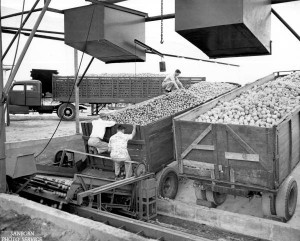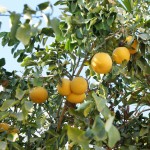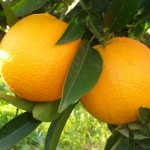History & Geography
Florida has a long history in citrus production and one which has dramatically changed over the years. GRAPEFRUIT ARRIVED AROUND 1806 courtesy of the French Count, Odet Philippe, who planted the first grove of grapefruit near Tampa, Florida, in 1823.
If you didn’t know the basic history then here it is:
-
1520
First Orange Tree
Spanish explorers planted the first orange tree around St Augustine
-
1806
Grapefruit arrives in Florida
Grapefruit arrived courtesy of French Count, Odet Philippe
-
1823
First Grapefruit Planted
First grapefruit grove is planted near Tampa
-
1865
Citrus tops 1 million boxes
Soon after the end of the Civil War commercial production of citrus topped 1 million boxes
-
1893
Citrus tops 5 million boxes
A growth in demand was met with supplies reaching 5 million boxes
-
1915
Citrus tops 10 million boxes
Despite a set-back during the Great Freeze citrus production in the state reaches 10 million boxes
-
1950
Citrus tops 100 million boxes
Total picking reached 100 million boxes of citrus
-
1971
Citrus tops 200 million boxes
Total picking reached 200 million boxes of citrus

1963 Unloading at Minute Maid Facility in Apopka
Since the 1960s Florida citrus has entered into another stage of development, marked by a reduction in acreage and production. The decline of citrus in Florida stems from increased commercial and residential land development in the Sunshine State. As Florida’s population increased steadily following World War Two, the amount of land dedicated to citrus cultivation rapidly decreased. For example, Orange County, Florida, home of Disneyland and Orlando, produced 95% less citrus in 1990 than in 1970. The panoramic views of citrus groves below now exist only in memory for many Floridians.
(www.floridamemory.com)
Today the CITRUS INDUSTRY IS WORTH $9 BILLION in economic activity for Florida.
There are 8,000 CITRUS GROWERS cultivating almost 550,000 acres of land and nearly 76,000 other people also work in the citrus industry or in related businesses.
Over recent years the market has also been suffering as a result of HLB (CITRUS GREENING).
Huanglongbing (HLB; citrus greening) is thought to be caused by the bacterium, Candidatus Liberibacter asiaticus. HLB has seriously affected citrus production in a number of countries in Asia, Africa, the Indian subcontinent and the Arabian Peninsula, and was discovered in Florida in August 2005.

1953 Unloading of fruits
Like anywhere WEATHER CONDITIONS can also an important role. Florida has a humid sub-tropical climate with a rainy season from May-October and during late summer/ early fall, tropical lows can bring damaging cyclones and hurricanes.
Interestingly Florida has more thunderstorms than any other US State and also more tornadoes per square mile, albeit weaker than in other Midwest States.
In this EL NIÑO YEAR we can expect above average rainfall in Spring and more low pressures in the Gulf of Mexico which generally brings less storms and hurricanes during the winter.
Occasionally the state can be hit by a strong winter freeze, anytime between mid-December and early March. The freeze 1985 and 1989 caused 90% damage to both young and mature citrus trees and more recently in 2010 where the freeze caused 30% less fruits to develop.
 Ultra International B.V.
Ultra International B.V.

 Recently the USDA revised their output figures once again to 12.2 million boxes, a further reduction of 100,000 since August. White grapefruit is forecasted at 2.7 million boxes while red (or pink) is unchanged at 9.5 million boxes.
Recently the USDA revised their output figures once again to 12.2 million boxes, a further reduction of 100,000 since August. White grapefruit is forecasted at 2.7 million boxes while red (or pink) is unchanged at 9.5 million boxes.
